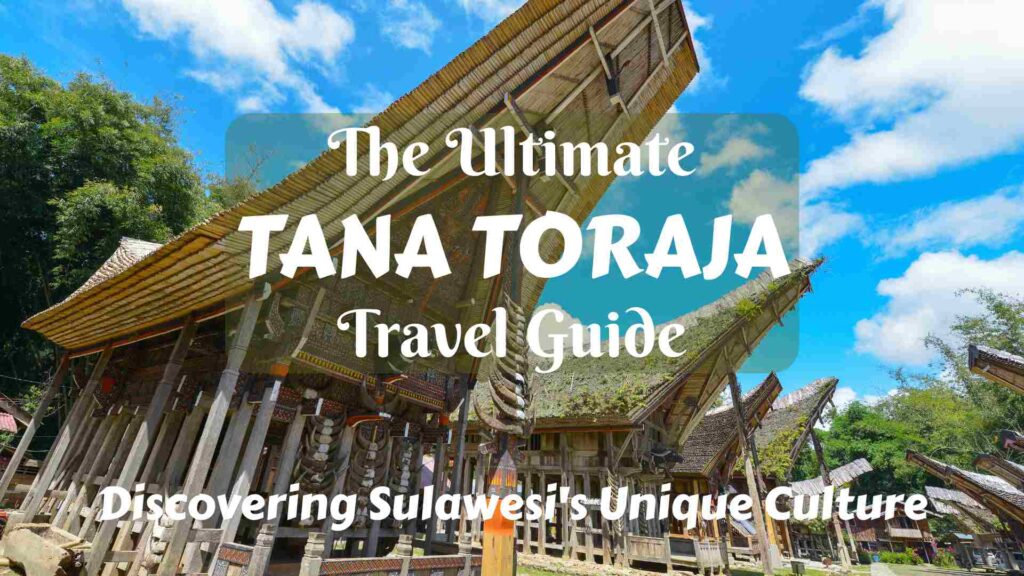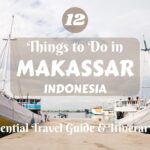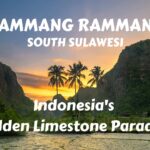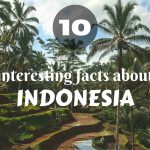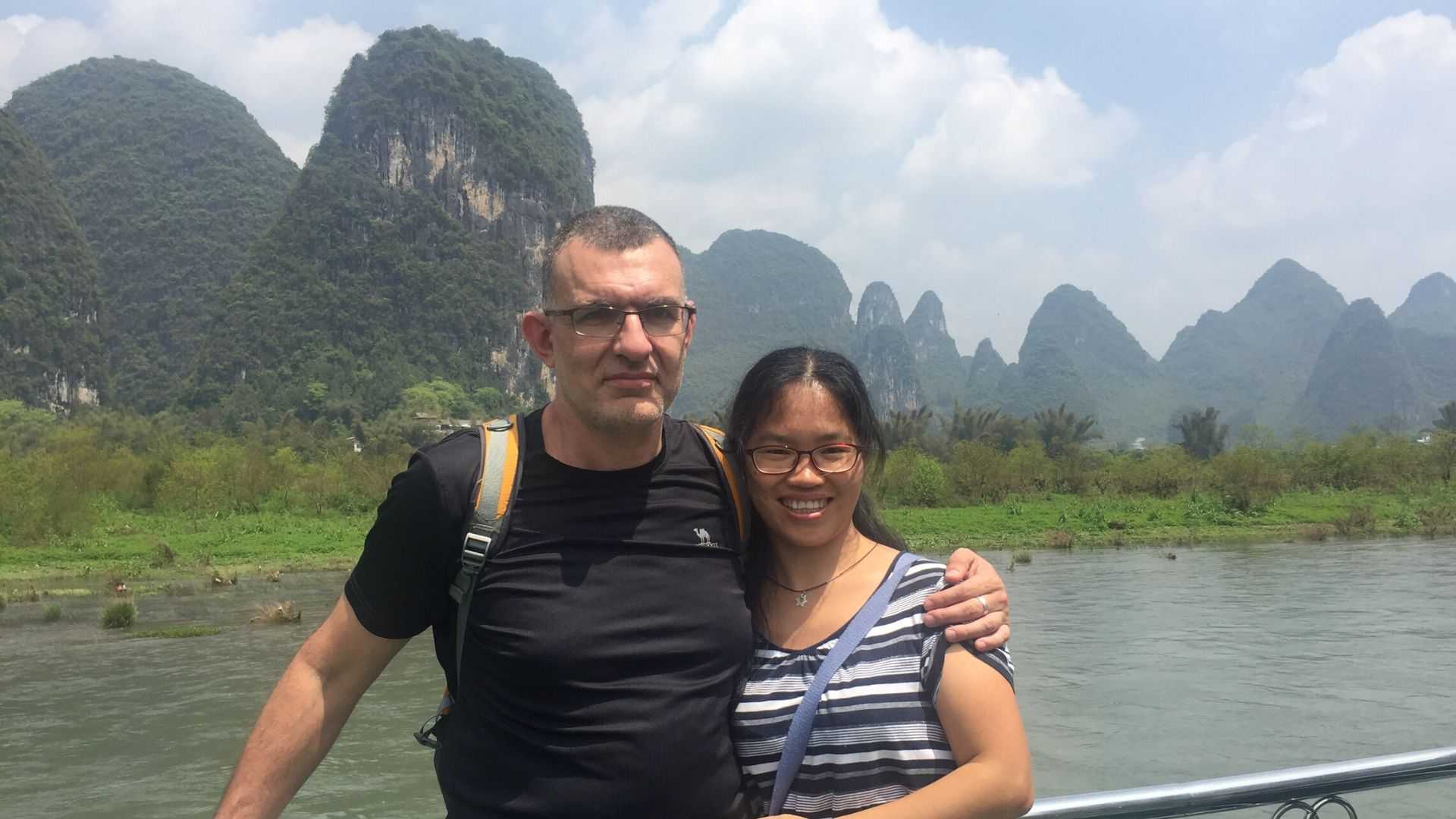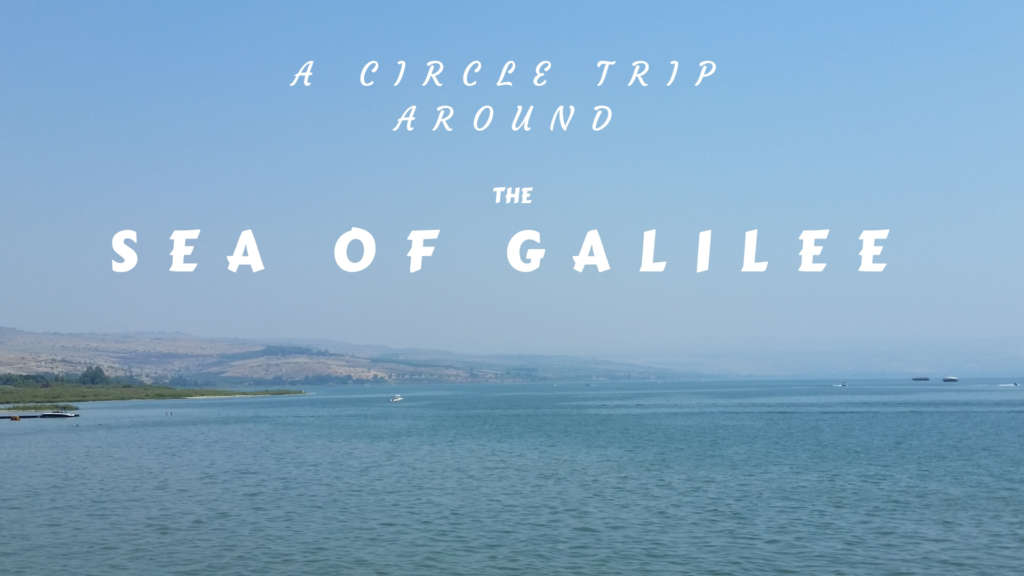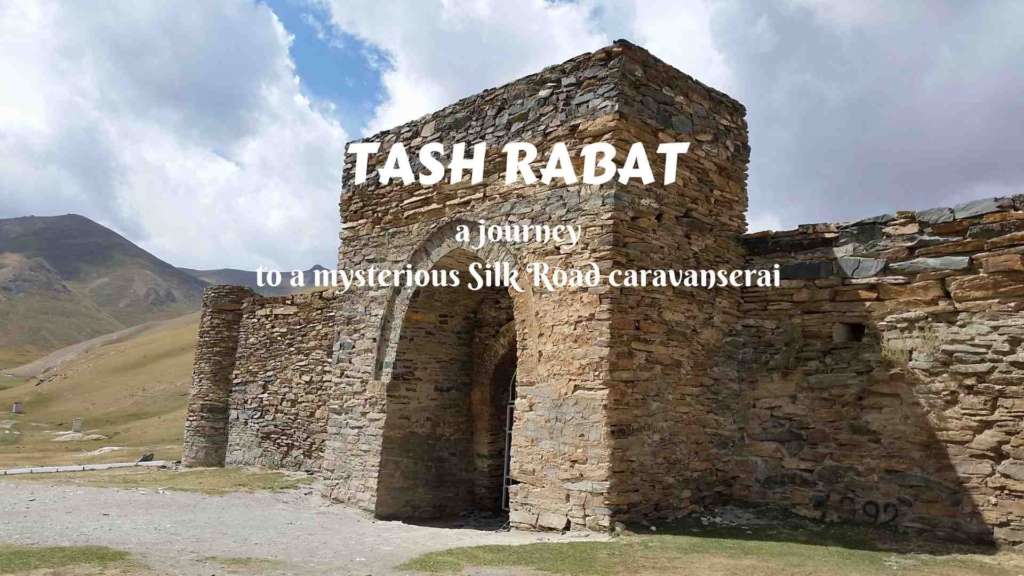Nestled high in the lush mountains of Sulawesi, Indonesia, lies Tana Toraja, a region that promises a travel experience unlike any other. This is a place where ancient traditions are not relics of the past but a vibrant part of daily life, where elaborate funeral ceremonies and unique death rituals take center stage, and where the stunning landscapes are dotted with the distinctive, boat-shaped tongkonan houses. For the adventurous traveler seeking to delve into a culture as profound as it is captivating, Tana Toraja is an unparalleled destination. In this comprehensive guide, we will delve into the geography, history, and rich culture of this extraordinary region, highlighting the must-see points of interest and providing you with all the essential information you need to explore this unforgettable corner of the world.
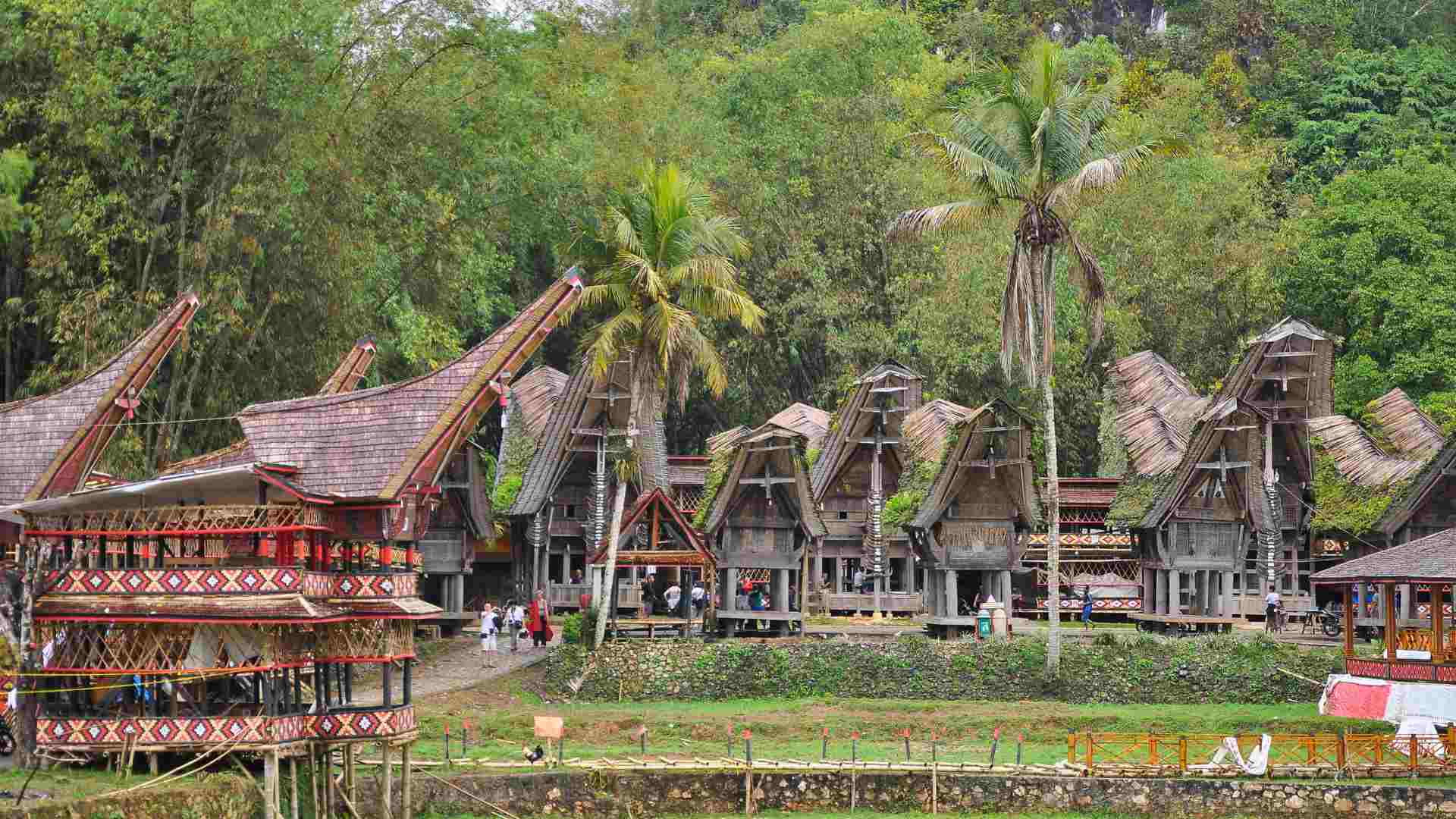
Table of Contents
About Tana Toraja
This is a mountainous region in the northern part of South Sulawesi —a place with hills covered in forests and valleys filled with rice fields. This is the land of the Toraja people, a unique Indonesian minority. People visit this land mostly to immerse themselves in Toraja’s unique culture- their funeral traditions, and their weird tongkonan houses. But to understand more about Toraja and to enrich your experience there, let’s first get inside the geography, history, and culture.
Some geography
The land of Toraja is located in the southern part of a large mountainous system covering most of Sulawesi Island. It doesn’t have clear boundaries, but in general, it fits into two administrative areas- regencies: Tana Toraja and North Toraja. The capital of Tana Toraja is Makale, and the capital of North Toraja is Rantepao.
But culturally and historically, the name “Tana Toraja” (which means “Torajaland”) includes the two regencies, and Rantepao (not Makale) is the center of this land, and a starting point for exploring the whole area around.
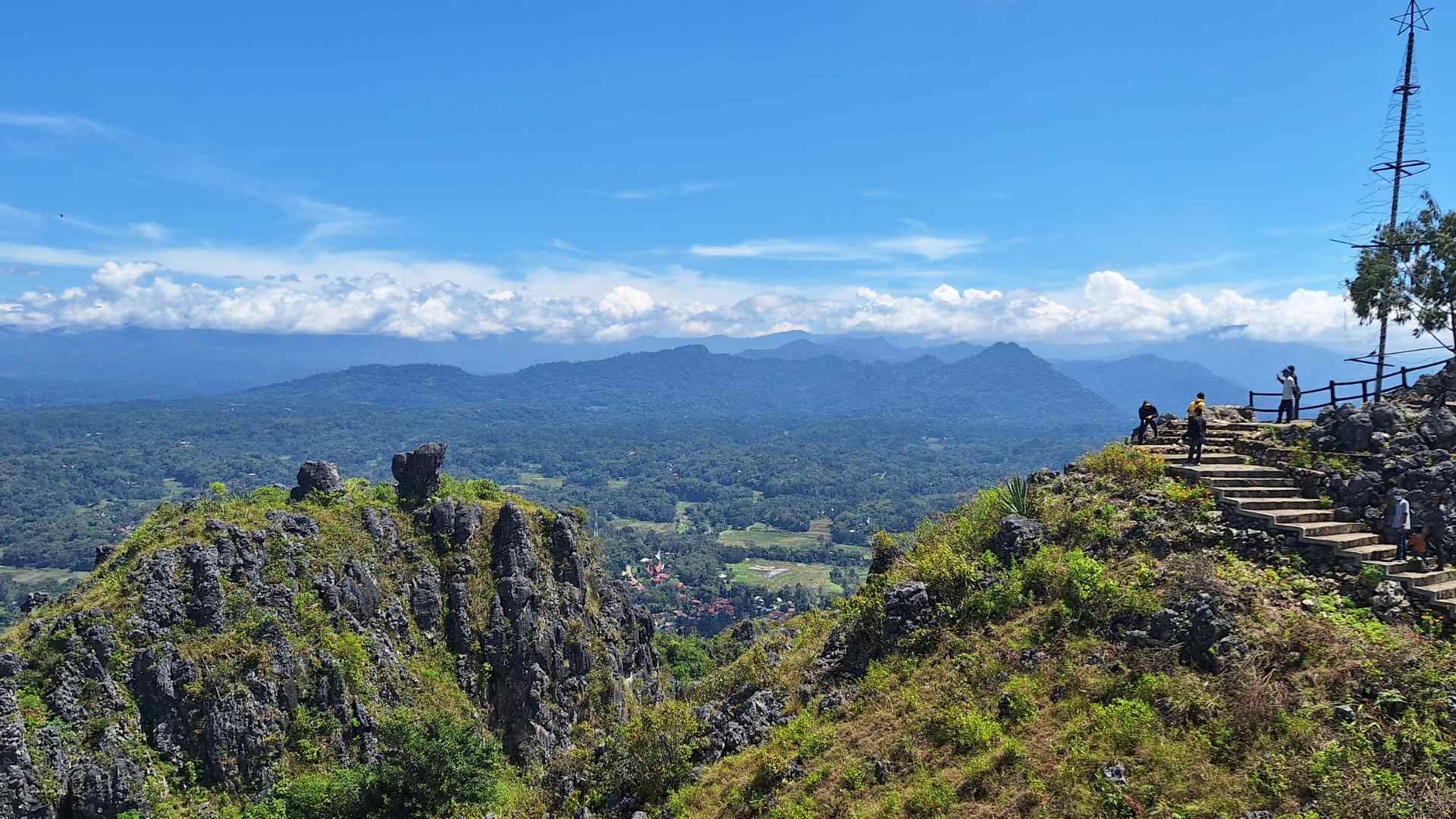
The highest peak in Tana Toraja is Mt Sesean (2150 m/7054 ft), and the lowest areas reach lands below 300 m altitude. But the average altitude of Tana Toraja- Rantepao and the nearby points of interest is around 800 to 1100 m above sea level.
Due to its mountainous nature and relatively high altitude, here the climate is cooler than at the seacoast and in general wetter. All of this makes Tana Toraja a very fresh and green place- a perfect haven for the unique culture of the Toraja people.
Some history
Due to a lack of written documents (Torajan people haven’t developed their own alphabet), we know too little about the distant past of this place. We can approximately divide the history and timeline of Tana Toraja into several eras.
Prehistoric era (unknown until 2000 BC)
We can only guess what might have been the situation in Tana Toraja in this distant past. And we can guess it just from the general knowledge that we have about the distant past of the Sunda Archipelago.
What we know is that the earliest humans living in what is now Indonesia, including Tana Toraja, were hunter-gatherers related to modern Papua and Australian Aboriginal people. There are almost no traces of them in Tana Toraja, but only in the caves around Rammang Rammang.

Early Austronesian era (2000 BC to 800 AD)
At the beginning of this era, the Austronesian people gradually settled in the Sunda Archipelago. At first, they mixed with the earlier population, and later fully assimilated it.
Again, we know almost nothing about these people from this distant past. Actually, the local people didn’t have a clear ethnical identity like “Toraja people“, but there were only isolated local villages here and there, often fighting with each other. The name “Toraja,” which means “people from the mountains”, was given to them by the neighboring Buginese and Makassarese people, many centuries later.
However, although the local people didn’t see themselves as “Toraja”, they still have a legend talking about their arrival by boats from the north. This legend explains the unique shape of their house roofs, but more on that later.
In general, we can conclude that this is the era of the gradual formation of the Torajan culture and their early animist religion, Aluk To Dolo. This is the time of the first megaliths (mehnirs) found in Tana Toraja today, the tongkonan houses and boat-shaped graves, and the first forms of the funeral traditions we know today.
Late Austronesian era (800 to 1900)
During this era, there weren’t too many changes in the lives of the Toraja. But there were changes in the surrounding areas. At first, the local chiefdoms in South Sulawesi grew into larger kingdoms while the Toraja people still kept living in self-governing villages, not in a unified kingdom. And their traditions continued to develop.
In the 15th and 16th centuries, the surrounding kingdoms adopted Islam. But the Toraja people remained animists. There was active trade and cultural interaction between Toraja and kingdoms like Luwu, Bone, and Gowa, but no direct political or military control from these kingdoms over this land.
Finally, the Dutch came.
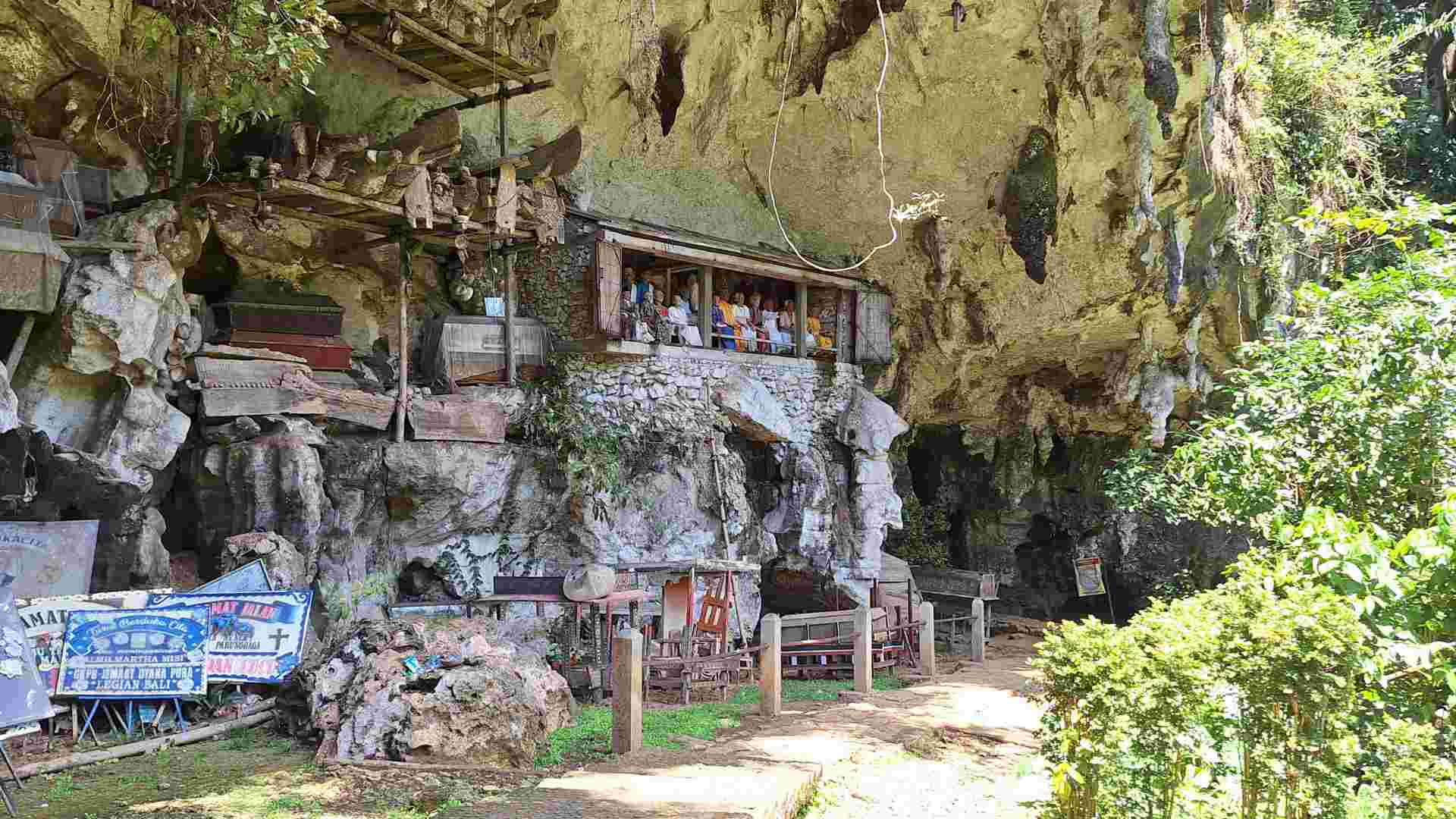
Dutch colonial era (1900 to 1946)
Actually, the Dutch came to Sulawesi Island much earlier, around the 17th century. But initially, they were focused on the coastal areas and the lands of the Buginese and Makassarese people. Tana Toraja remained far from their attention, mostly due to its difficult access from the lowlands.
First, the Dutch saw the Toraja people as potential Christians. They started sending missionaries at the beginning of the 20th century, but only a few Torajans became Christians. This is the time when Tana Toraja was finally unified under the Dutch colonial rule.
When the Japanese occupied Sulawesi Island, their oppression of the Toraja people strengthened the Toraja’s ethnical identity. At that time, about 30% of the local people had already become Christians.
Modern Indonesian era (1946 until today)
After the independence and the creation of Indonesia, in the middle of the 20th century, the Toraja people were a subject of intense attempts at Islamization from the neighboring people, particularly by the Islamist separatist movements.
These attempts faced serious resistance among Torajans, and further led them to become Christians. Today, about 80% of Toraja people are Christians- Catholics or Protestants. But they still keep their old traditions from their animist religion, mixing them with Christianity. And in some way, it creates controversies.
At the same time, at the end of the 20th century, the unique Toraja culture was noticed by the tourist industry. Tourism rapidly grew in recent years, and it further influenced preserving the local culture, gradually turning it into a tourist attraction.
So, let’s take a look at this culture.

Some culture
As mentioned above, the unique culture of Toraja comes from the old animist religion Aluk To Dolo, combined with the surrounding nature and daily life.
Tongkonan houses
This is the first thing every traveler can see when arriving in Tana Toraja- clusters of a few houses arranged in rows. Their roofs are boat-shaped, and there are a few styles and forms, as well as different sizes.
Let’s go back to the legend about the arrival of Toraja’s ancestors. According to it, they came from the north by boats. But the boats were damaged in a severe storm, and they were no longer usable for sailing. So, people decided to use them as roofs of their first houses. Soon, it turned into a tradition, combined with their religion and belief system.
There are two types of Toraja houses: tongkonan and banua. Tongkonan is for noble families, and banua- for commoners (lower class). The main difference between them is that a banua is a less attractive, less decorated, and in general, smaller version of a tongkonan.
The key elements of tongkonan (and banua) include:
- Boat-shaped (saddled) roofs- the most distinctive element of the house.
- Wooden pillars- they are separated from the ground by pillars, forming a space for domestic animals under the house.
- Decoration- tongkonan houses are richly decorated with elements related to their beliefs. The decoration often includes buffalo horns, as buffalo play a significant role in their funeral traditions.
In a typical Toraja village, tongkonans are arranged in a row, and their roofs are north-south oriented. There is another row with rice barns (alang) in front of the main row. Rice barns are smaller but in the same shape as tongkonans, oriented in the same direction.
Boat-shaped roofs can be seen not only in the houses and rice barns (alang) but also in the temporary grave towers used in Toraja’s funeral ceremonies, as well as some other temporary structures.
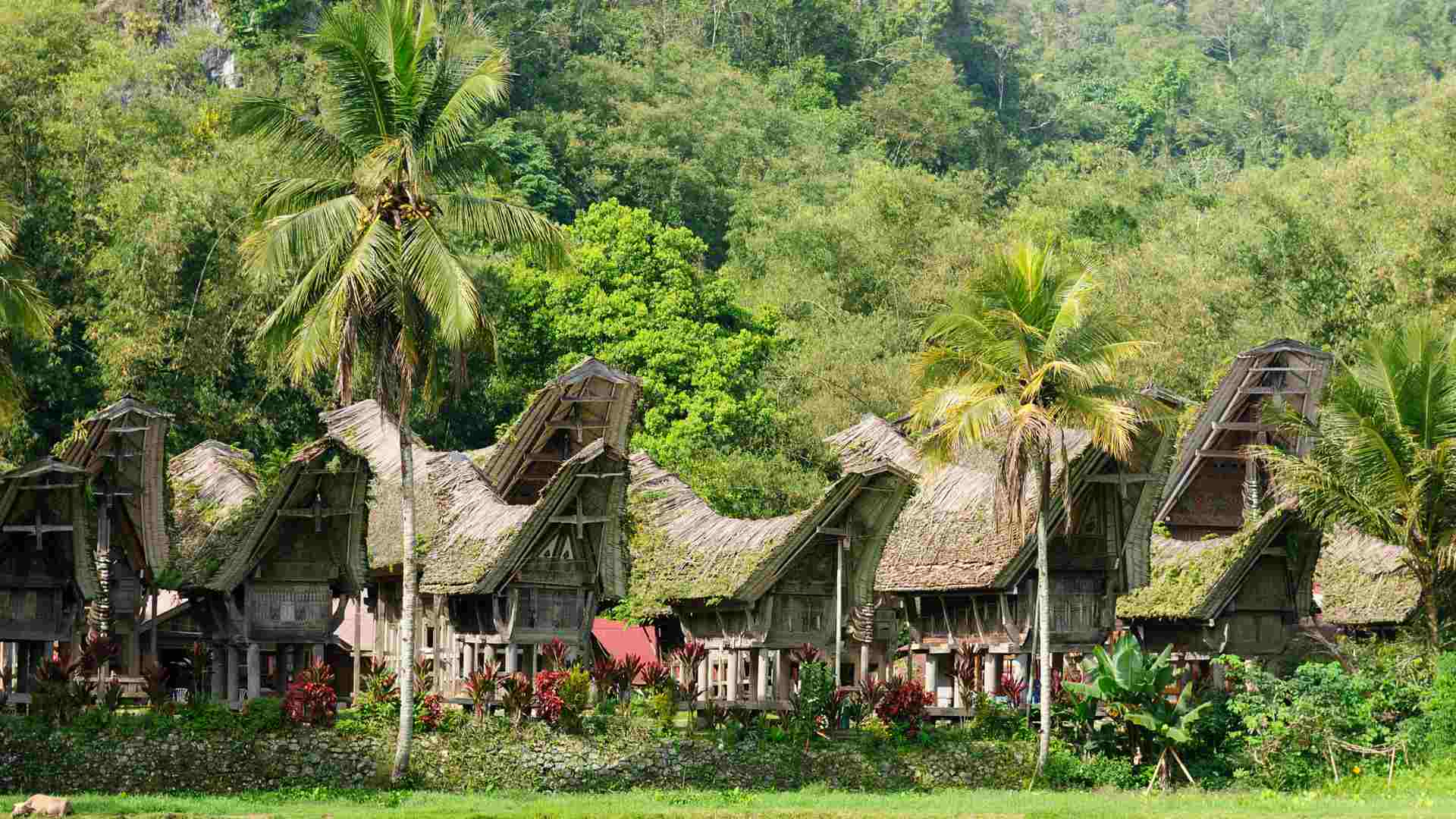
Funeral traditions
This is one of the most unique traditional activities in the world, and the main feature of the Torajan culture. Its roots come from their old animist religion, and today it is incorporated in the Torajan Christianity (with some Christian elements added).
To understand these traditions, let’s describe what happens when a family member dies, and how Torajans look at such an event.
Waiting period- “sickness”
When someone dies, he or she is not considered truly dead but only sick (to makula). His or her soul flies around the village, and the other family members carry the dead, feed him or her, talk to him or her, and just live with the dead like a “living” human. This is the waiting period. It can last from a few months to a few years.
Dead people, considered “sick”
Rambu Solo
Meanwhile, the family prepares for the main funeral ceremony, called Rambu Solo. When everything is ready, the date for the ceremony is announced, and it starts at a certain time (which tour operators and hotels usually are informed about, too). The ceremony can last for a few days.
Rambu Solo is a celebration of life. Now is the time for the “living dead” to pass from the state of “sickness” to the afterlife, called Puya. So, the ceremony always includes not only mourning but also a happy festivity, with songs and dances, food, games, and much more.
A central element of Rambu Solo is buffalo or pig sacrifice. According to Toraja’s animist beliefs, buffaloes bring the soul of the deceased to Puya. The number of buffalo sacrifices can vary depending on the social status of the dead and his or her family.
After the sacrifice, it is time to lay the dead in the grave. It can be a tongkonan-shaped grave (mentioned above), or a “normal house”-shaped grave. It can also be in a cave or cliffs in a hanging coffin (a bit similar to those in Sagada, Philippines).
Another element is the so-called tau-tau (an effigy). This is a wooden doll representing the dead. They usually put it in a balcony-shaped place on the cliffs. As a result, you can see a whole “meeting” of tau-tau dolls in the burial sites today. All of them “watching” the living from above.
With this, the ceremony is over.
Rambu Solo funeral ceremony
Ma’Nene
Not everything ends with Rambu Solo. One or a few years after the ceremony, Torajans perform another ceremony called Ma’Nene- cleansing the dead. They exhume the dead, wash him or her, change his or her clothes, and sometimes parade the body in the village. Finally, they return it to the grave until the next Ma’Nene.
As mentioned above, the whole funeral tradition comes from Aluk To Dolo. It hasn’t changed too much with the conversion to Christianity in recent years, but due to the different beliefs, now the purpose of the various rituals is different, and they have a different meaning.
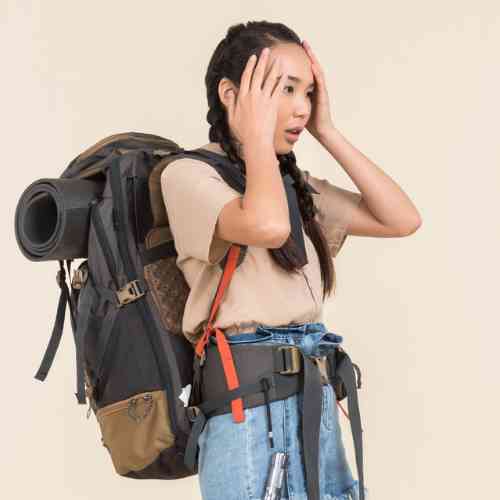 Exploring the Earth is fantastic! However, there are various hidden dangers that may ruin your journeys. Don’t allow that to happen, or at least reduce the consequences as much as possible!
Exploring the Earth is fantastic! However, there are various hidden dangers that may ruin your journeys. Don’t allow that to happen, or at least reduce the consequences as much as possible!
Include a travel insurance as a part of your trip preparation by pressing the button below:
Our trip to Tana Toraja
All of the above has made Tana Toraja an attractive, exotic destination- one of the main places of interest in Sulawesi Island, Indonesia. So, we included it in our South Sulawesi itinerary.
Our itinerary was divided into two parts- a “sea” part (with Bira and Selayar Island), and a “South Sulawesi interior” part. For the second part, we rented a car from Makassar and traveled around South Sulawesi for a week. We visited the spectacular Rammang Rammang karst area and proceeded for about 7-8 hours to Tana Toraja.
We chose Rantepao, the main city in the land of Toraja, as our “base camp” for 3 nights and 4 days. From there, we traveled every day to various points of interest in Tana Toraja.
Unfortunately, we couldn’t see Rambu Solo, and we saw only the end of a Ma’Nene ceremony (yes, you should be prepared for that). But what we saw still impressed us a lot.
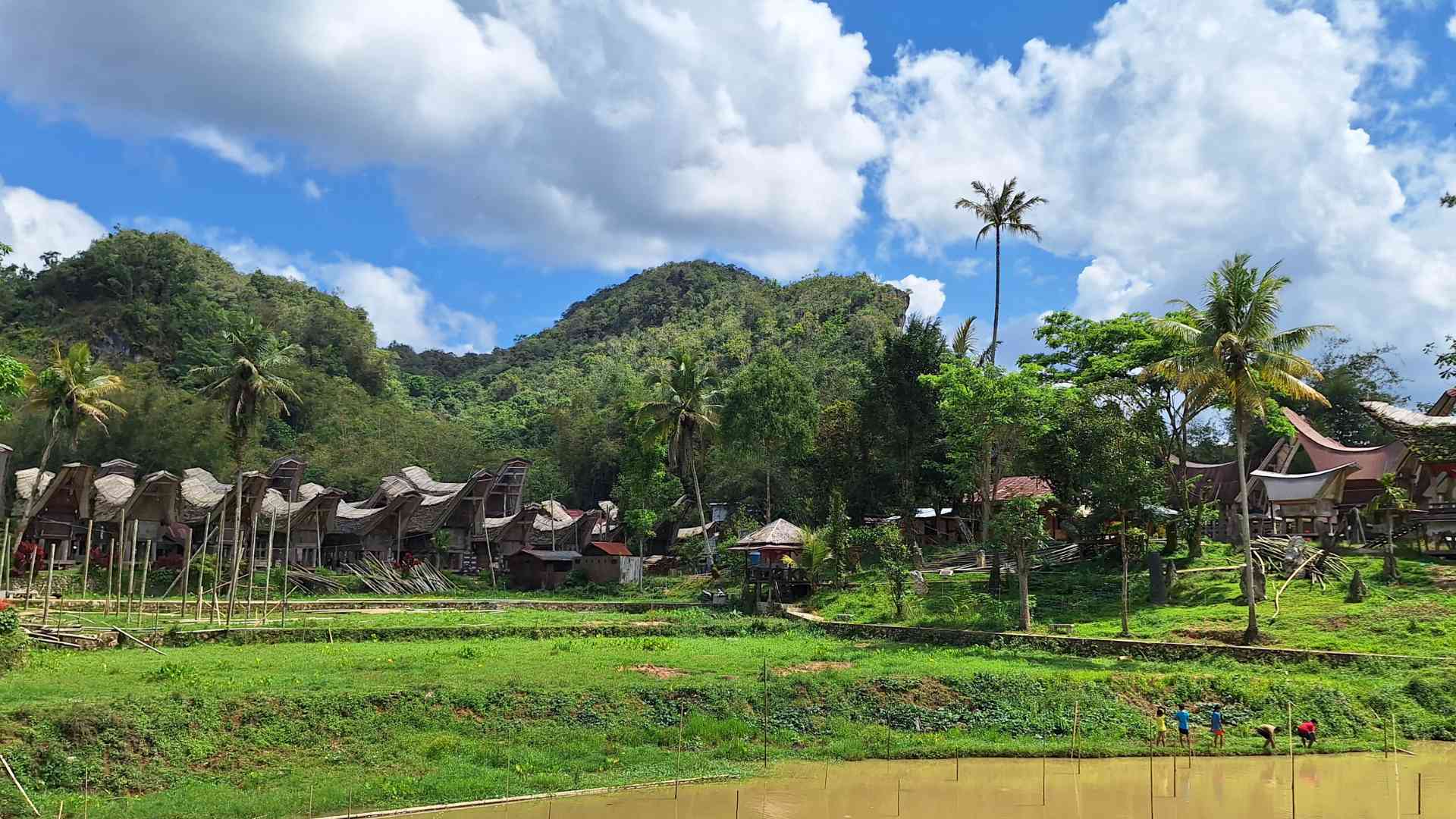
Places to visit in Tana Toraja
Tana Toraja is not a city but a much larger area. You can see tongkonan villages everywhere, but there are some special points of interest presenting the best of the area and the local culture. They are described below, so you can plan your Toraja itinerary.
Rantepao
Rantepao is the main geographical and cultural center in Tana Toraja, and the capital of North Toraja Regency. It is a nice place with a vibrant center and streets, a lot of churches, schools, and more. In general, there are two main points of interest to focus on here.
Center
The center is beautiful, with a large square like a park. Here you can see several significant tongkonan constructions. The largest one is the Cultural Center, which contains Museum Pongtiku Rantepao, presenting artifacts from the Toraja culture- a good educational experience that can make you prepare for your stroll around this land.
In addition, there are several other tongkonan constructions, something like a park, a sign of Toraja, and it is a favorite place for social gatherings. There are two main boulevards passing by the main square, full of shops, some cafes and restaurants, and other public places.
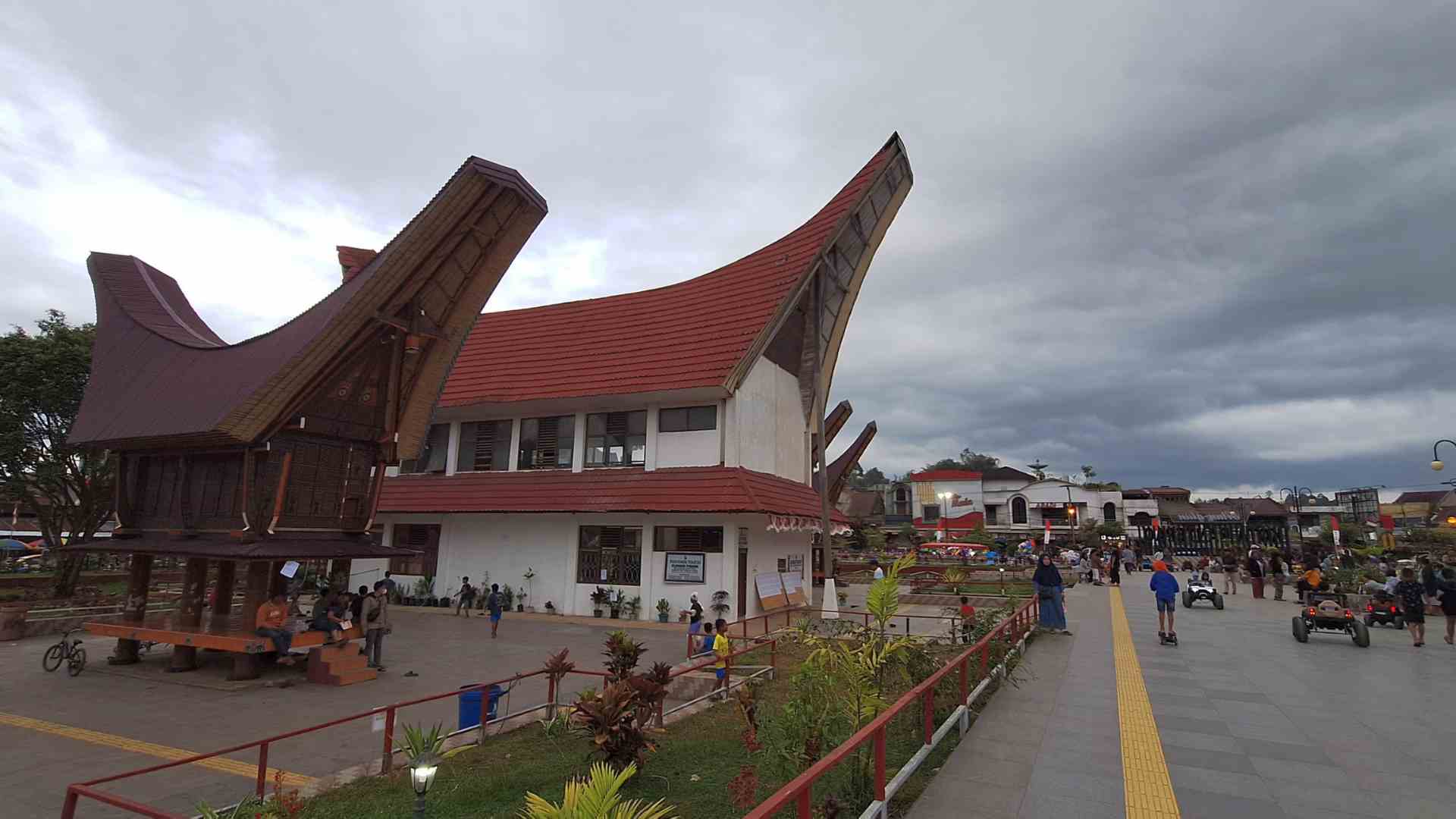
Buffalo Market
It is located in the northern part of Rantepao- a big square with buffaloes, waiting for their fate. They care for them, feed them, and sell them before a Rambu Solo ceremony. This market is open 6 days a week, but there are also special market days when the place is full of people. Prices of a buffalo can vary from a few hundred USD to more than 50,000 USD.
Any tongkonan village
Rantepao is a small city. You can easily take a walk out of the urban area, and you will certainly see a local village with tongkonan houses. They are everywhere.
Although most of the villages are shown on Google Maps (as “Tongkonan X”), they are not specific tourist destinations but just a normal residential area for local people. Yet they are usually not “less impressive” than the special tourist ones. Here you can immerse yourself in the normal daily life of the Torajans, not “decorated” for tourists.
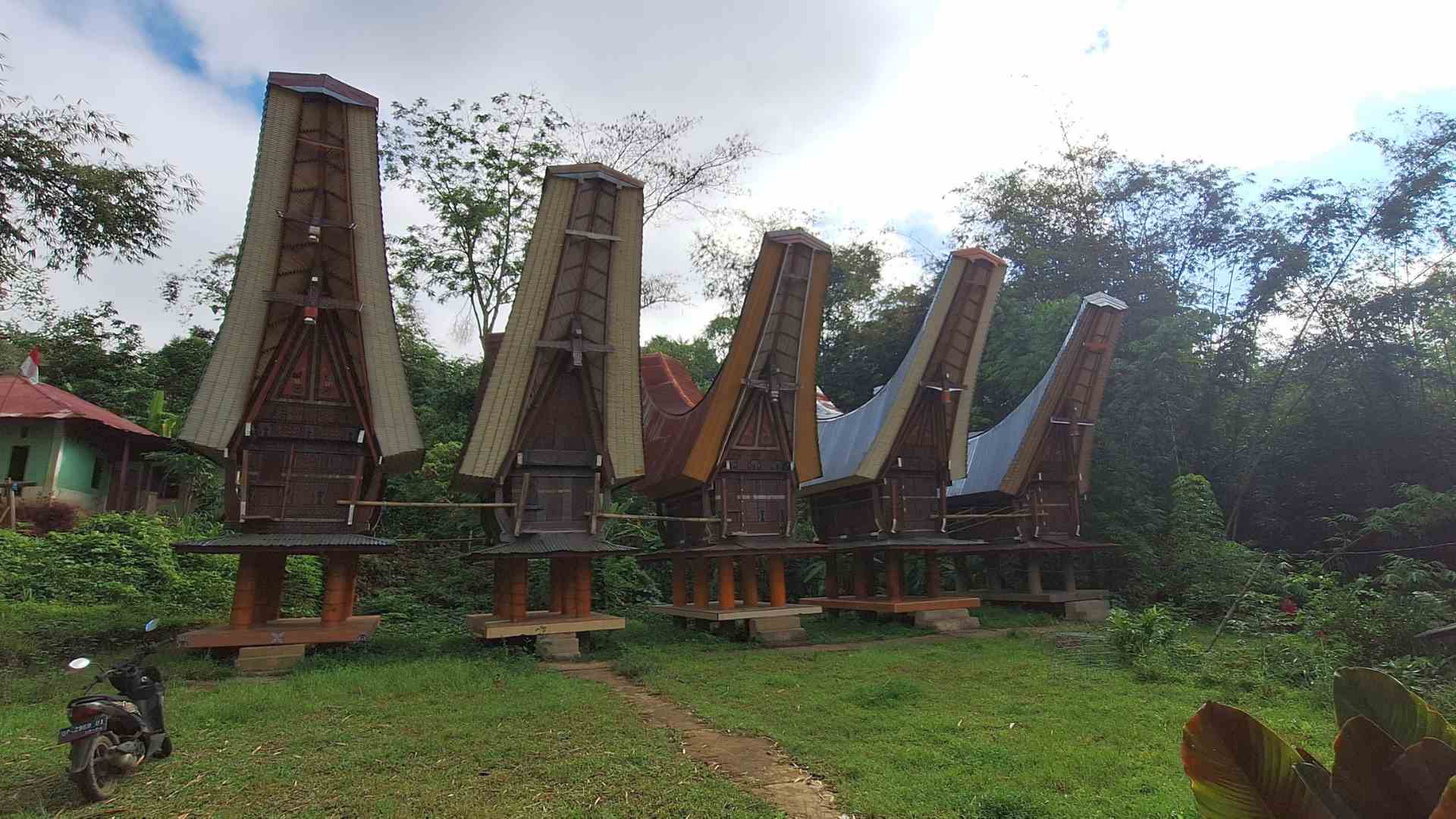
Ke’te Kesu’
This village has been chosen as the “best model” of a Toraja tongkonan village, to serve as an open-air museum of the tongkonan culture. Its houses are carefully preserved down to the last detail. Although it is a museum, local people still live there normally. However, today most of them work in the tourism industry, presenting their culture.
They also practice all the funeral traditions like the other Torajans- they perform their ceremonies at the cliffs behind the village. Today, one of the houses is turned into a museum presenting artifacts from the local culture (unfortunately, it was closed when we were there).
There is a small entrance fee to the village: 30,000 IDR. You can visit it at any time, but the best hours are during the day.
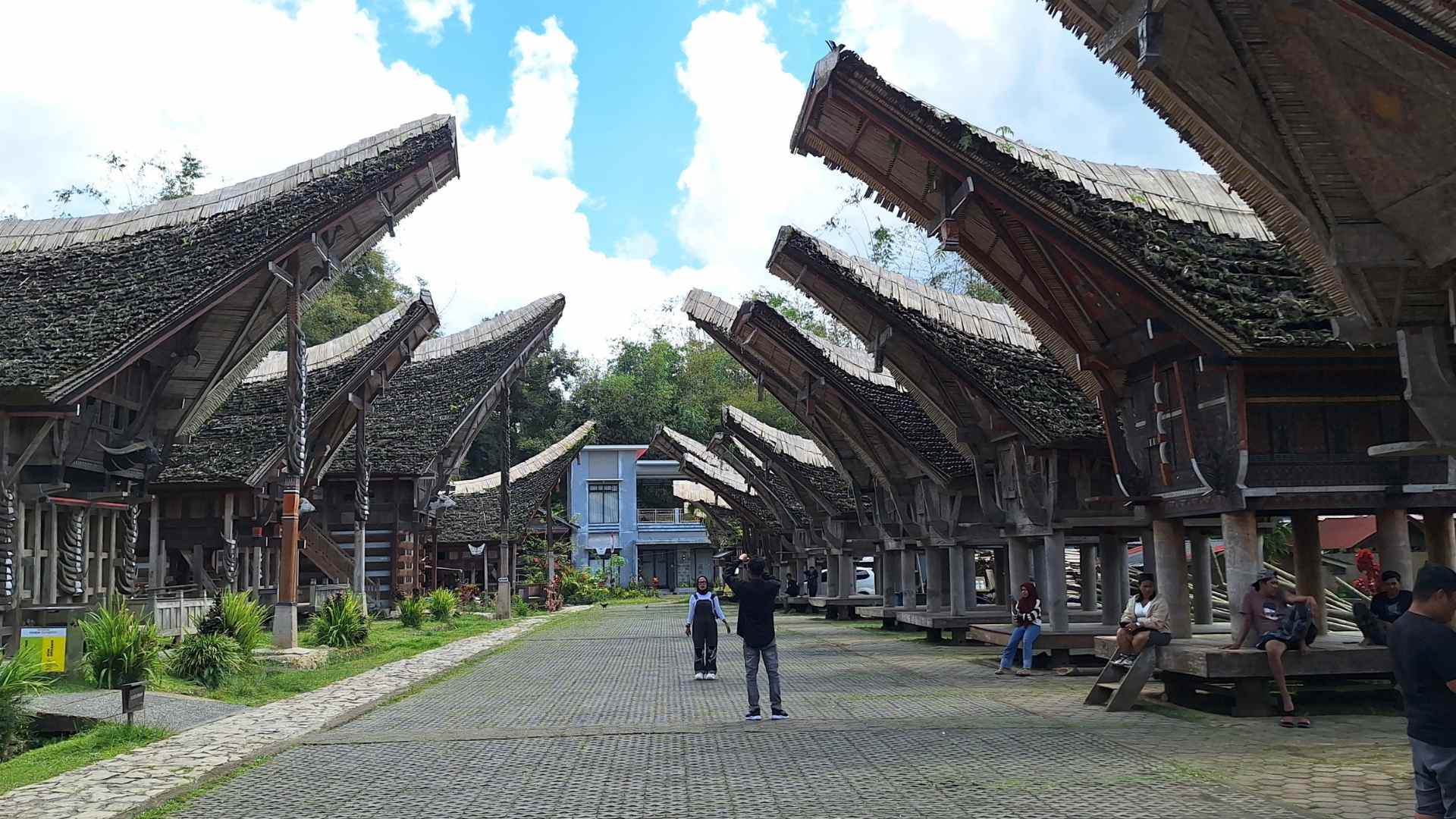
Buntu Pune
If you want to find something “less-touristy”, you can go to Buntu Pune- another tongkonan village, located between Rantepao and Ke’te Kesu’. Actually, it is not different than other “normal” tongkonan villages, but its burial site is more impressive. For example, here you can see graves with windows and the dead sitting in front of the window, “watching” the life outside.
Londa Cave
This is one of the largest caves in Tana Toraja, used as a burial site. You arrive there, enter the arc-gate of the park around it, and reach the cave at the bottom of the cliffs.
You will see cliffs partially hidden in lush tropical rainforest. On the cliff, you will also see artificial terraces with tau-tau dolls, one or two hanging coffins, and skulls. Real skulls!
Then, you will see the narrow entrance of the cave at the bottom of the cliff. You can enter inside, and be careful- there isn’t any light inside, and there are side corridors that you can get lost in. You still can see coffins and skulls inside, in the dark. To make it even scarier, be prepared to see Huntsman spiders (but don’t worry, they are harmless).
There is a small entrance fee for Londa Cave- 20,000 IDR. Some people stay at the entrance and offer lanterns for inside for 100,000 IDR, but lanterns are not mandatory- we used our phone lights and it was enough.
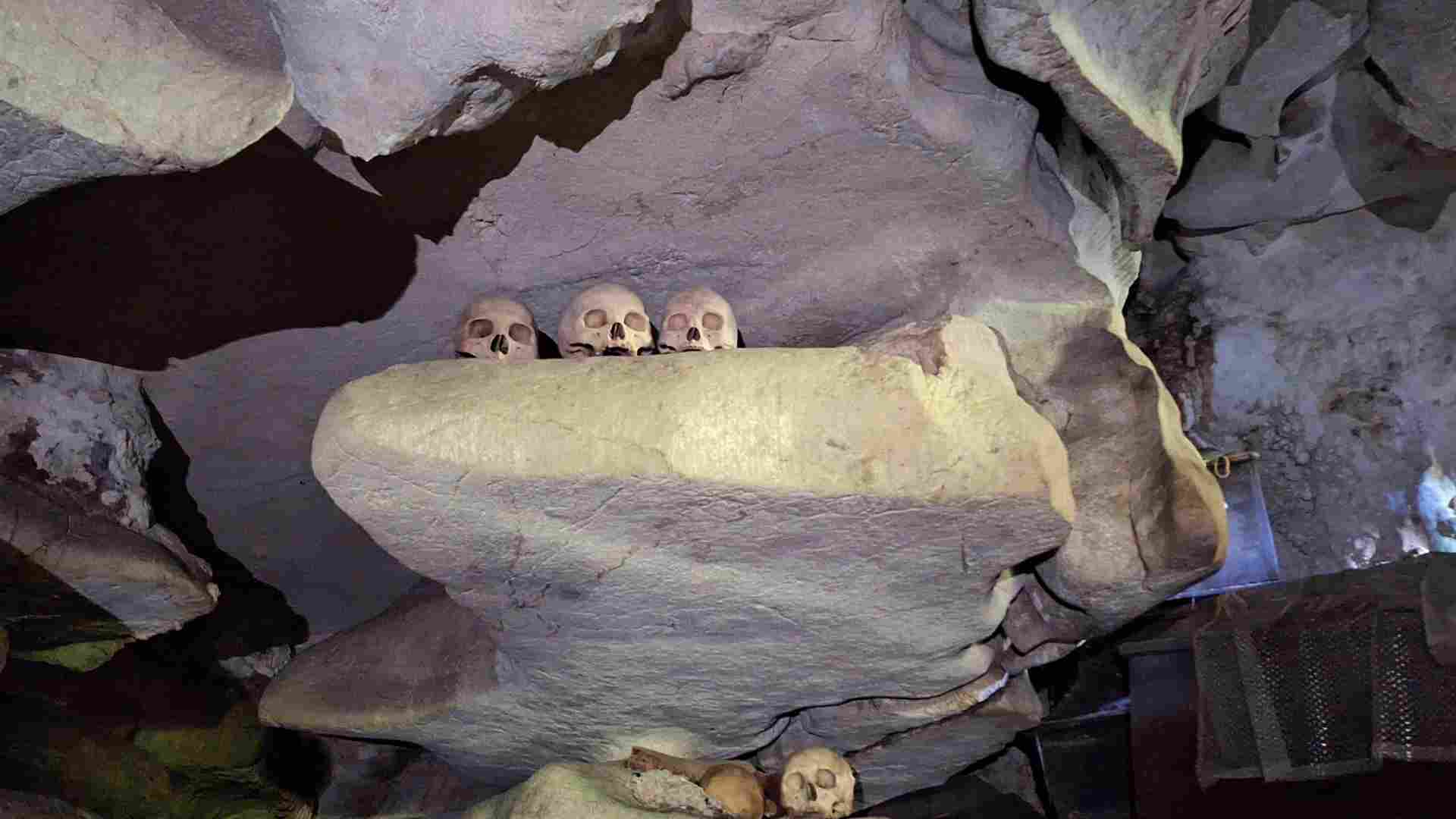
Batu Lemo
This is one of the best, oldest, and most famous burial sites in Tana Toraja. Due to its perfect conditions- high cliffs (larger than those in Londa Cave and Buntu Pune), responding to Toraja’s old animist beliefs, only those with a lot of money (mostly nobles) can afford a burial here (the funeral ceremony itself is held in another place, mostly in the village of Lemo itself). Needless to say, it made Batu Lemo the most popular burial site for tourists, too.
Here you can see hanging coffins, tau-tau dolls in several terraces, and tongkonan-shaped graves. As a tourist attraction, there are souvenir shops in front of the burial site. You arrive at a parking lot where you pay the entrance fee of 30,000 IDR. From there, you can cross a small valley separating the height from the parking lot and the souvenir shops, and explore the cliff with the burial elements closely. Or you can watch them from the height- the views are spectacular.
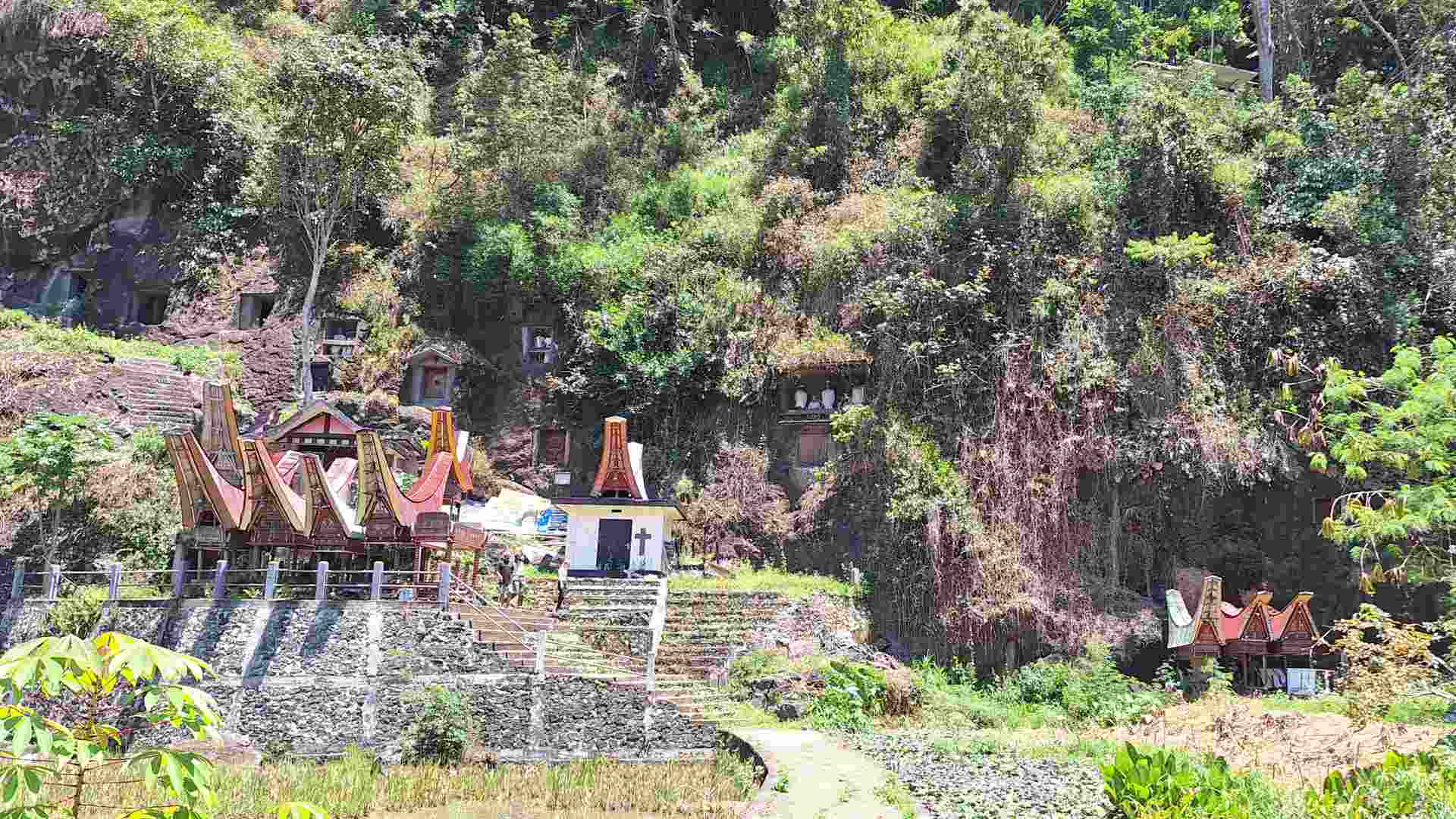
Bori Kalimbuang
This is the best burial site in Tana Toraja with megaliths. These megaliths were erected as monuments for the commemoration of the dead buried here. But unlike Batu Lemo, Bori Kalimbuang is also a ground for funeral ceremonies, so it has a dual function- as a funeral, and as a burial site. And indeed, besides the megaliths (menhirs, vertical stones), here you can find some graves too.
The graves include tongkonan-shaped versions and rock graves carved into large boulders. One of the most unique grave forms is the “infant graves”- for babies without teeth in tree trunks.
Entrance fee: 50,000 IDR.
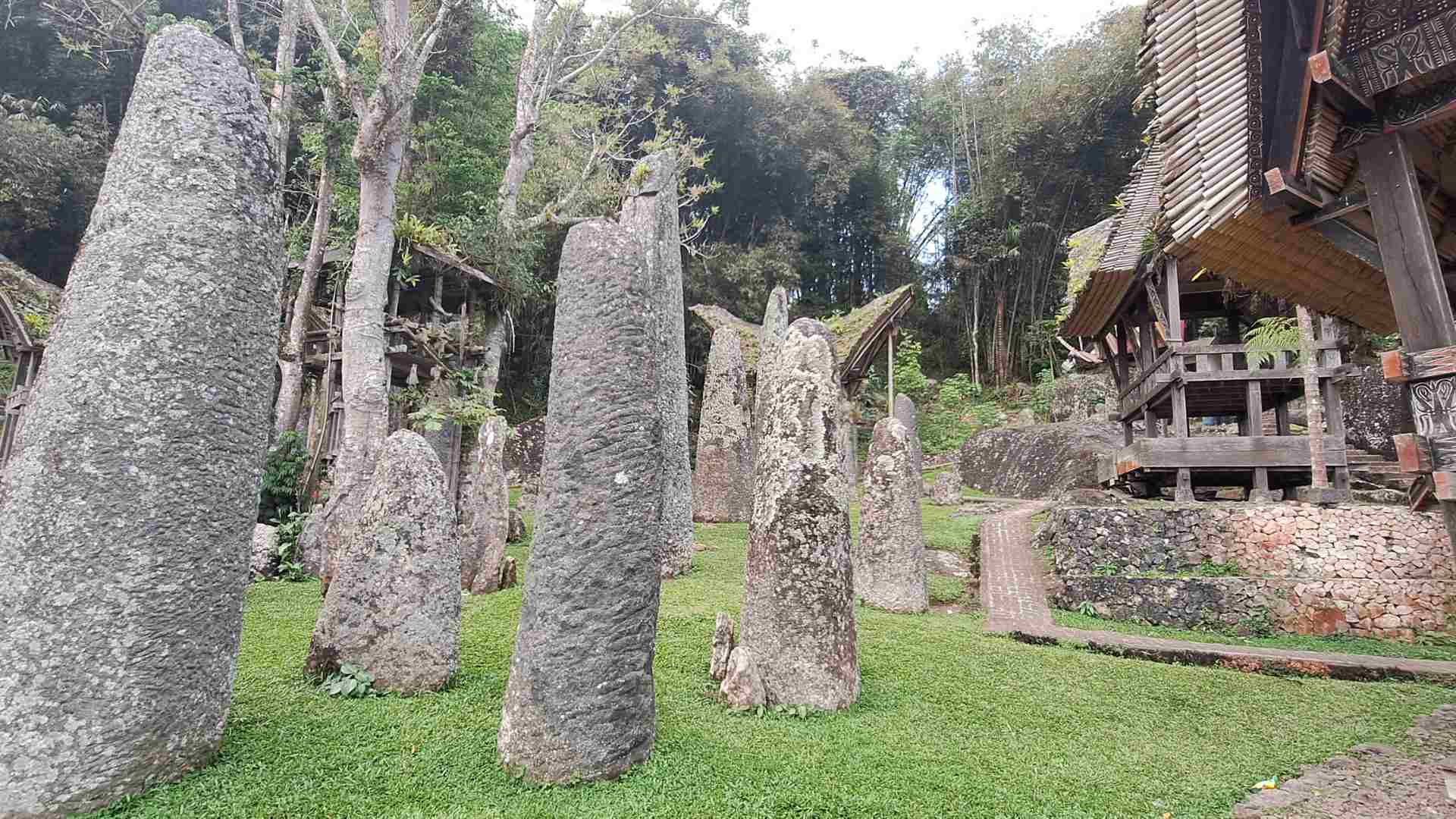
Kambira
We mentioned the infant graves of Bori Kalimbuang. But the best examples of such graves can be found in Kambira, another burial site, located near Makale. If a baby dies before the growth of the first tooth, he or she is buried in a tree trunk. Today, this practice is generally abandoned, but such graves can still be found in this site.
Museum Buntu Kalando
While you visit Kambira, you can also visit the local Museum Buntu Kalando. Here you can see something different than just funeral and burial artifacts. It is established in a local tongkonan, a restored version of a king’s palace which belonged to the kings of the small Sangalla Kingdom that ruled this part of Tana Toraja. You can see various artifacts from Toraja’s daily life- from weapons to musical instruments.

Blessing Statue of Jesus Christ
This is the most spectacular landmark in the whole of Tana Toraja. The Blessing Statue of Jesus Christ is one of the largest of this kind in the world, and today it is a major tourist attraction. It is a new landmark, constructed between 2013 and 2015, to boost tourism in the area. The statue symbolizes the conversion of the majority of people from animism to Christianity.
The statue is erected on the top of a mountain not far from Makale. It is 23 m tall and presents Jesus with hands in a blessing position. There are fantastic panoramic views from the top, which make it even more attractive to visit.
There is an entrance fee for the site- 10,000 IDR.
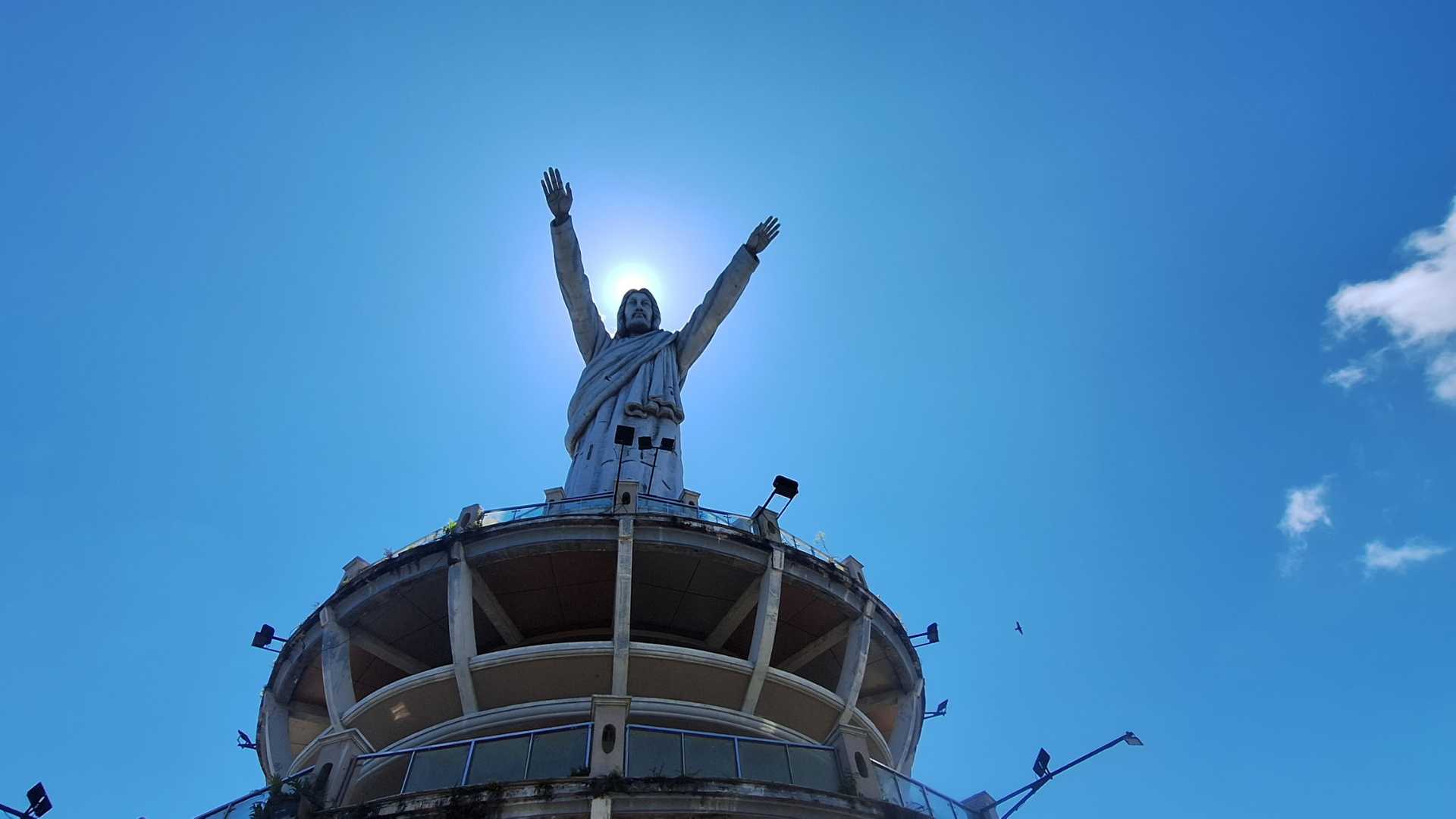
Sa’Dan village
Now, let’s go north, on the other side of Rantepao. Sa’Dan village is another cultural gem in the land of Toraja. Besides the funeral traditions, here you can see another side of the Torajan culture- textile weaving. The village is the center of this craft in the land of Toraja, and the textiles are used in every aspect of the local life, from decoration to funeral ceremonies.
Here you can join a weaving demonstration and buy some textile souvenirs- not only clothes but also banners and other artifacts.
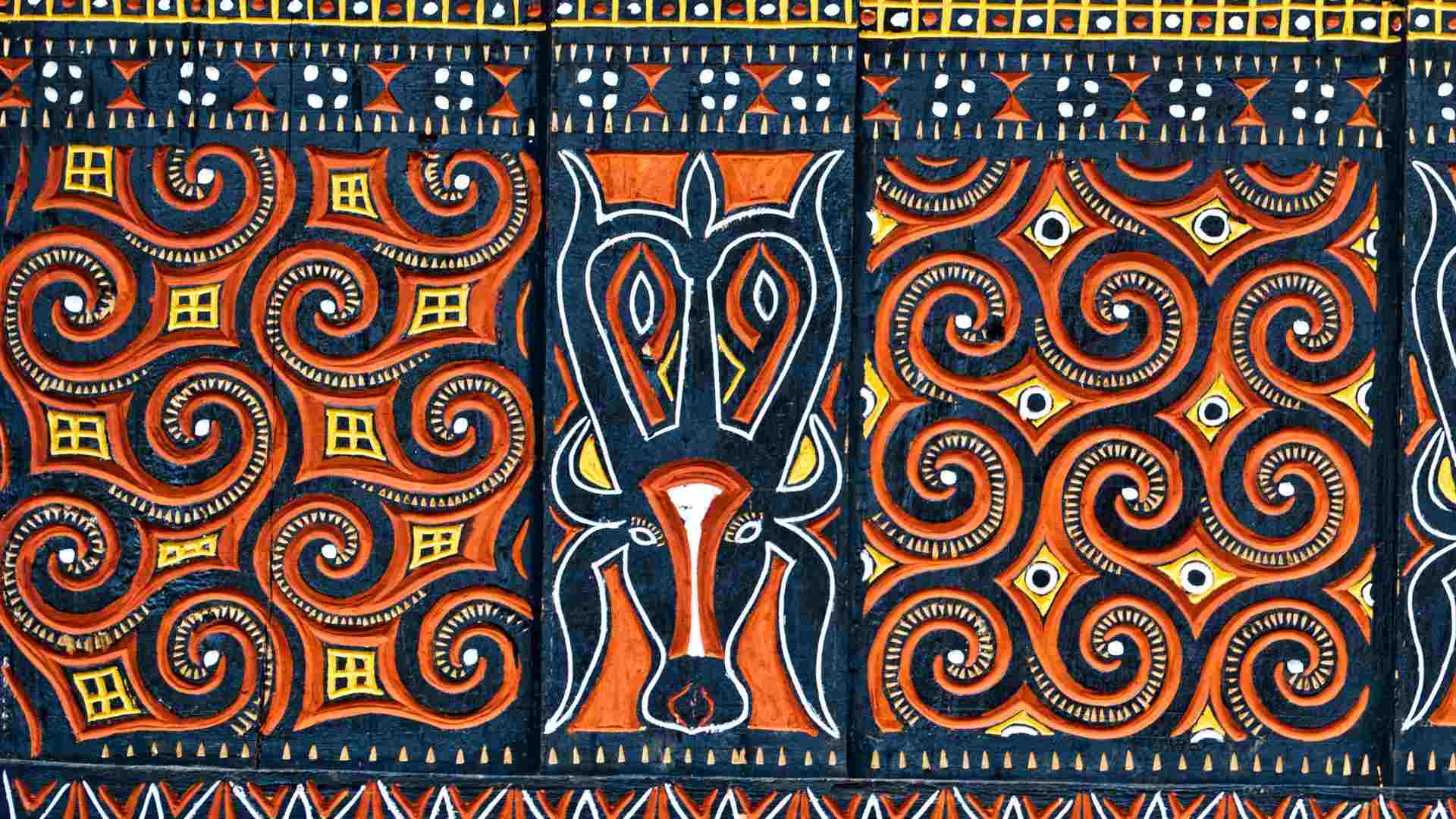
Lolai Village
This is one of the many tongkonan villages in Tana Toraja. But there is something that makes it different- its surrounding landscape. The name “Lolai” means “land above the clouds”. It is located at about 1350 m altitude, on a mountain ridge with stunning views of the surrounding valleys. Due to its specific location and climate, early in the morning, the valleys below are often covered by a thin fog. It creates an illusion like “floating over the clouds”.
To enjoy this scenery, you should get there between 5:00 am and 7:00 am. There are panoramic terraces in the best viewpoints to observe the “sea of clouds”.
Of course, you can always combine it with immersing in the local culture. There is a burial site nearby (here we saw the end of a Ma’Nene ceremony), where you can join the local funeral and burial traditions.
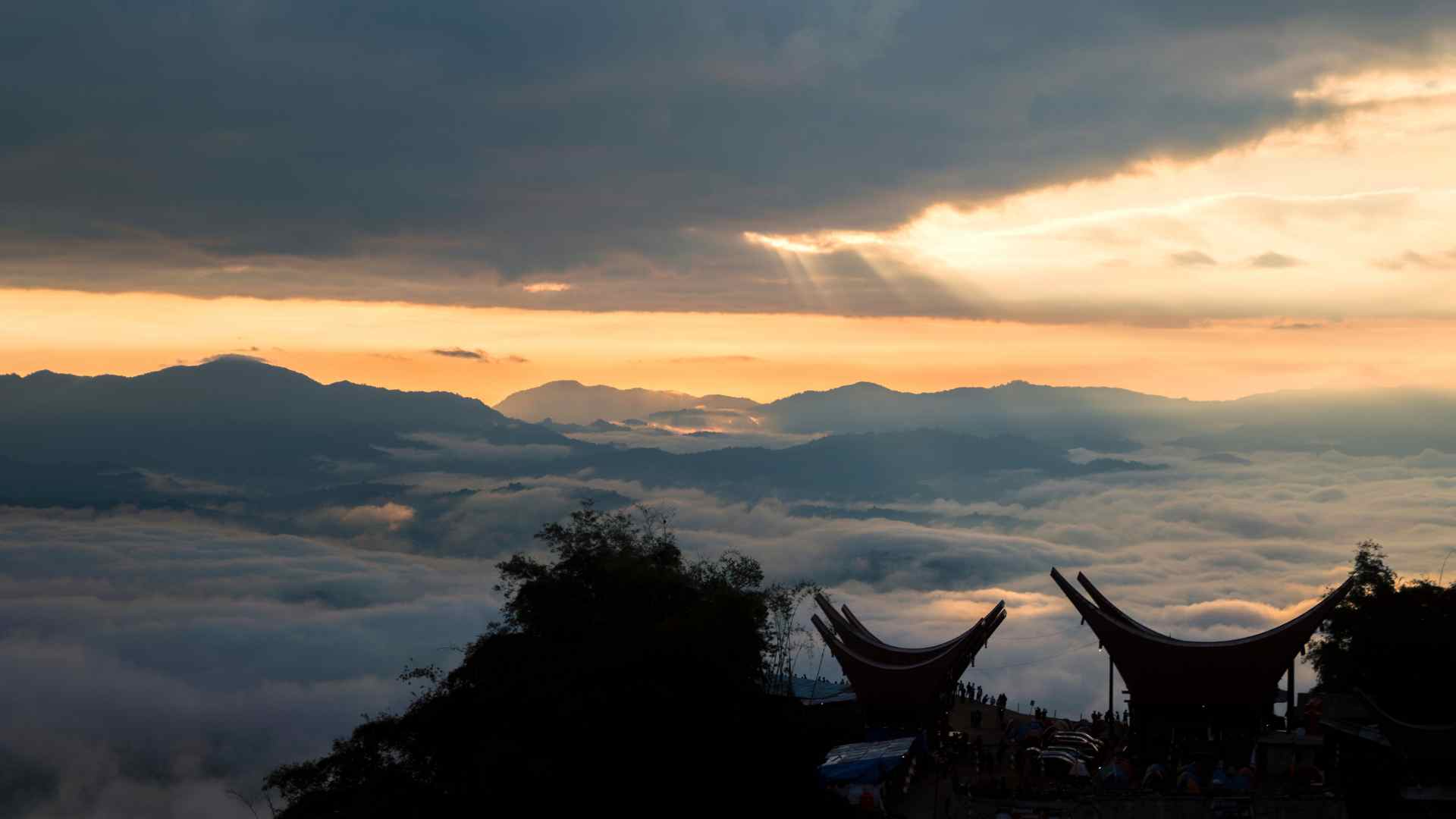
Mount Sesean
With an altitude of 2150 m above sea level, this is one of the highest and most prominent mountains in Tana Toraja. It rises magnificently above the surrounding valleys and reveals spectacular views of the area around Rantepao from above. Today, it has gradually become a popular trekking destination.
To hike Mount Sesean, you have to reach the village of Batutumonga, located on the southern slopes of the mountain. It is the starting point of a Sesean trail- a 2 to 3-hour, relatively easy hike (in one direction).
On the way to the top, you can immerse yourself in the local mountain tropical nature. And when you reach the top, you can enjoy even more spectacular views than those from Lolai.

Let’s also take a look at two relatively small but beautiful natural points of interest- Tilanga Natural Pool and Danau Limbong.
Tilanga Natural Pool
It is a small pond with crystal clear waters, hidden in a lush rainforest. The pond is surrounded by cliffs, and the whole scenery is immersed in tranquility.
Tilanga Natural pool is a home for eels with ears, called Masapi, considered as “guardians of the pool”. Here you can swim in the water, and the curious Masapi can come close to you.
This is a tourist site with an entrance fee of 25,000 IDR and working hours: from 8:00 am to 4:00 pm.
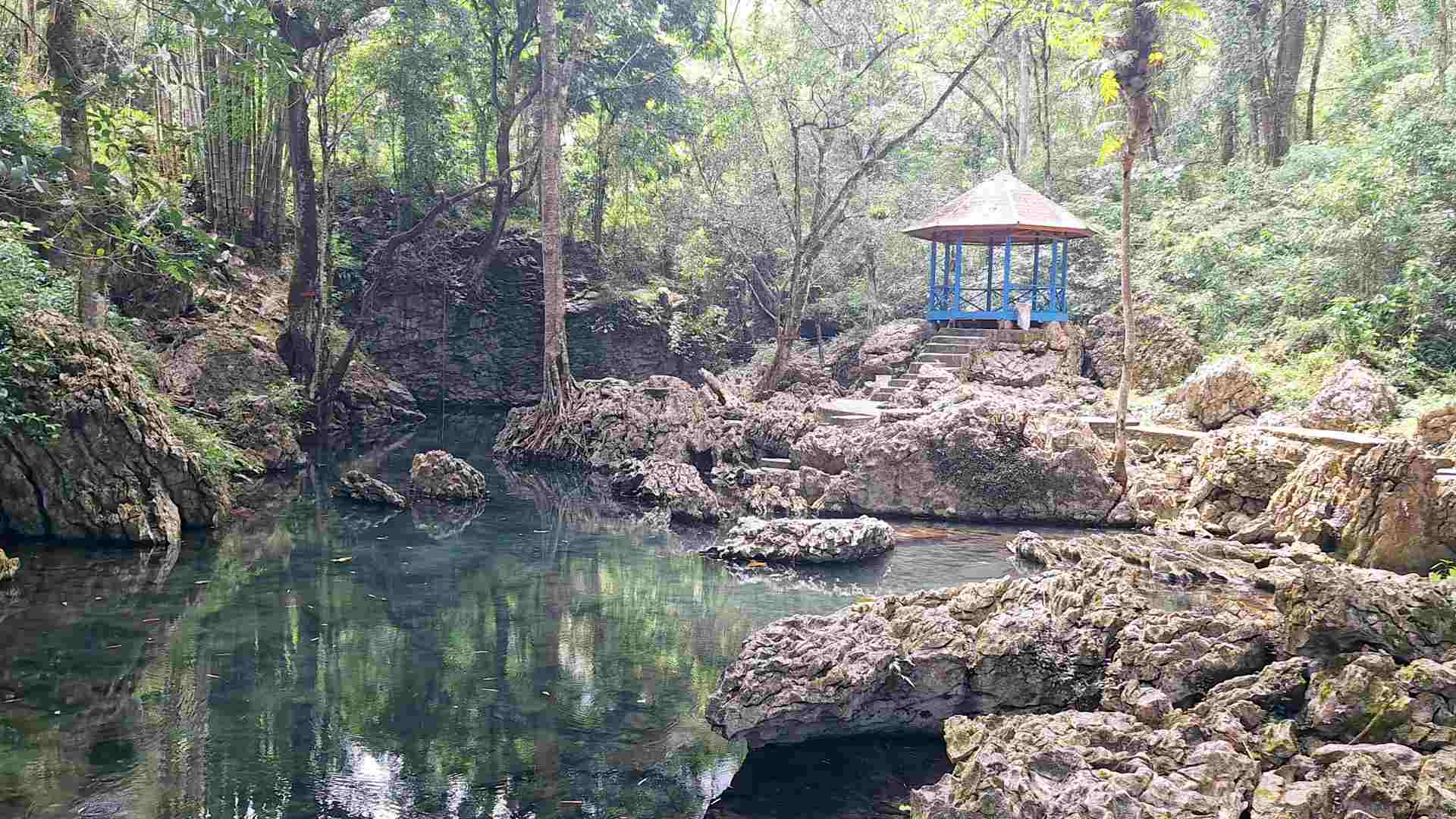
Danau Limbong
Danau Limbong (Lake Limbong) is a small, picturesque lake located southwest of Rantepao, in a mountainous terrain. It is surrounded by tall cliffs, creating a spectacular scenery- a great place for relaxation.
Here you can rent a water bike or a small boat to float on the lake and enjoy the scenery around it from the middle of the water body. Or you can just sit around the lake on the benches or in the gazebos and relax.
There is an entrance fee here too: 25,000 IDR, working hours: 7:00 am to 6:00 pm.
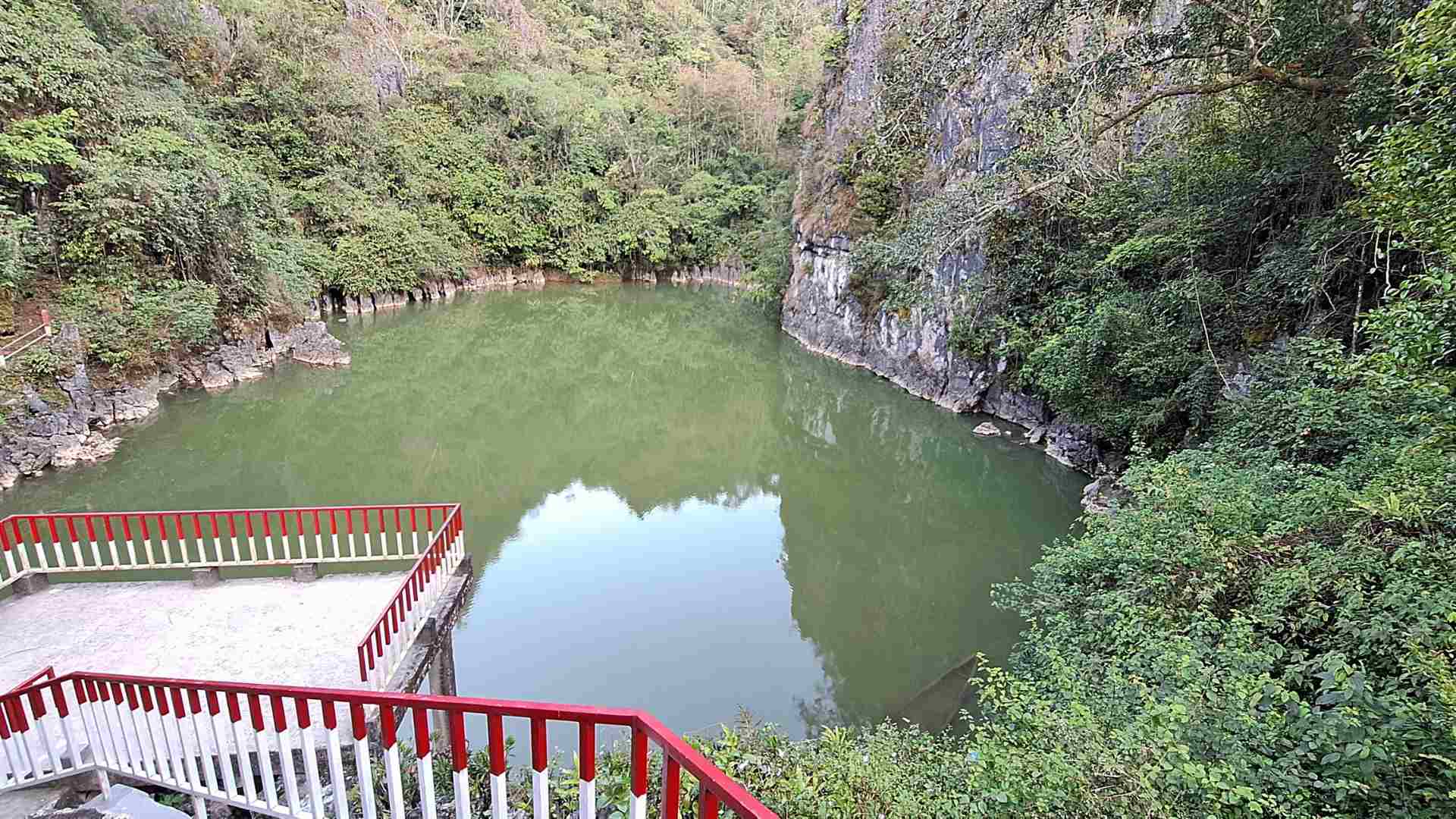
Useful tips
All of these points of interest described above are scattered in a relatively large area (something like 50 x 40 km), in various directions from the main starting point of Rantepao. And the main activities related to the funeral tradition can’t be seen every day. So, there are some useful tips below to help you organize your trip to get the best of Tana Toraja.
Transportation
First- how to reach Tana Toraja? Tana Toraja is well-connected by roads to the other parts of Sulawesi Island. There are frequent buses (usually for around 200,000 IDR) from Makassar to Rantepao, traveling about 8 hours. Also, there are other, less-frequent buses from Palopo (for about 3 hours), Sengkang, Majene, and even distant cities like Palu and Kendari. There are the cheapest options.
But if you want to travel to Tana Toraja in a faster and more comfortable way, you can fly to the newly-established airport by plane from Makassar, or you can travel by shared taxi from Makassar (usually for 1,000,000 IDR).
However, the best way to travel not only to Tana Toraja but also around the points of interest inside is to rent a car. That’s what we did- we rented a car from Makassar and used it not only for Tana Toraja but for a full 7-day circle trip, including also places like Rammang Rammang and Lake Tempe.
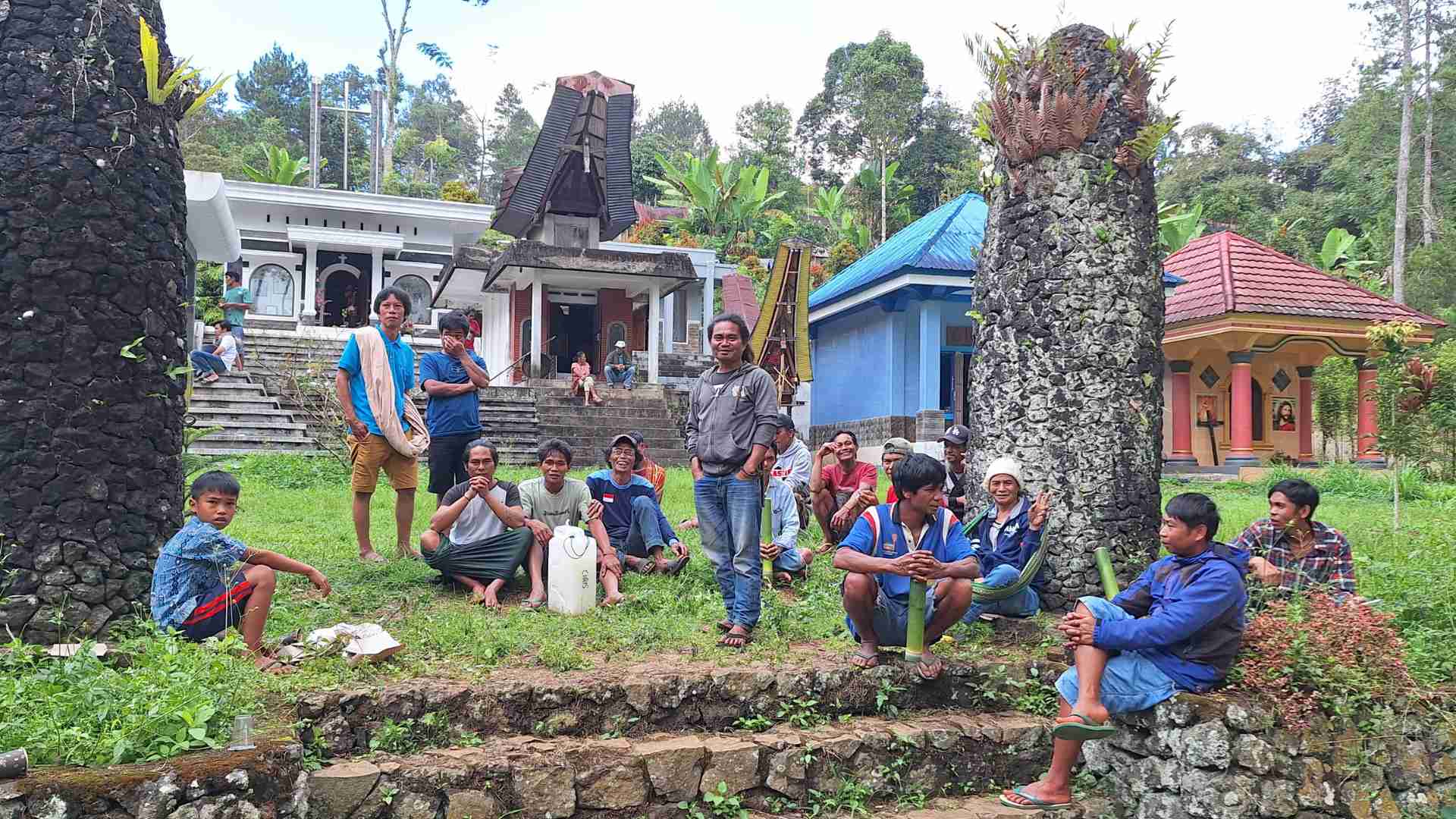
Local transport
If you arrive in Rantepao by public transport or taxi, you have to find local transport to reach the points of interest around. There are local bemos, angkots (minibuses), but they are for locals, not for tourists. Although they can help you, their goals are the larger towns and villages, not the points of interest. They can be found mostly on the main road between Makale and Rantepao.
Another option is to rent a motorcycle (ask your hotel for that). There are several rental companies, as well as hotels that offer motorcycles for 100,000 to 150,000 per day.
You can also rent a car (with or without a driver). There are several rental car companies located in Rantepao: Murry Rent Car, Central Rent Car, Nadi Travel, and Kameloan Transport. Hiring a car with a driver can usually cost between 800,000 and 1,000,000 IDR per day. For self-driving, you can expect something like 400,000 to 500,000 IDR per day.
Accommodation
Tana Toraja is a touristy area. So, there are a lot of new hotels and other places to stay. You can easily find them on Booking or Agoda. In recent years, you have a lot of choices- from luxurious resorts to budget (sometimes with low quality but at least providing a shelter) accommodations.
We stayed in Indra Toraja hotel, located only 5 minutes walking from the Central square and about 10 minutes (even less) to the closest tongkonan village on the other side of the river crossing the town. It is a nice, 2-star hotel, not too luxurious but with a very pleasant environment, with a tongkonan-shaped roof and a garden in the middle. And when we arrived, the staff offered us very delicious “welcome ice-juice”.
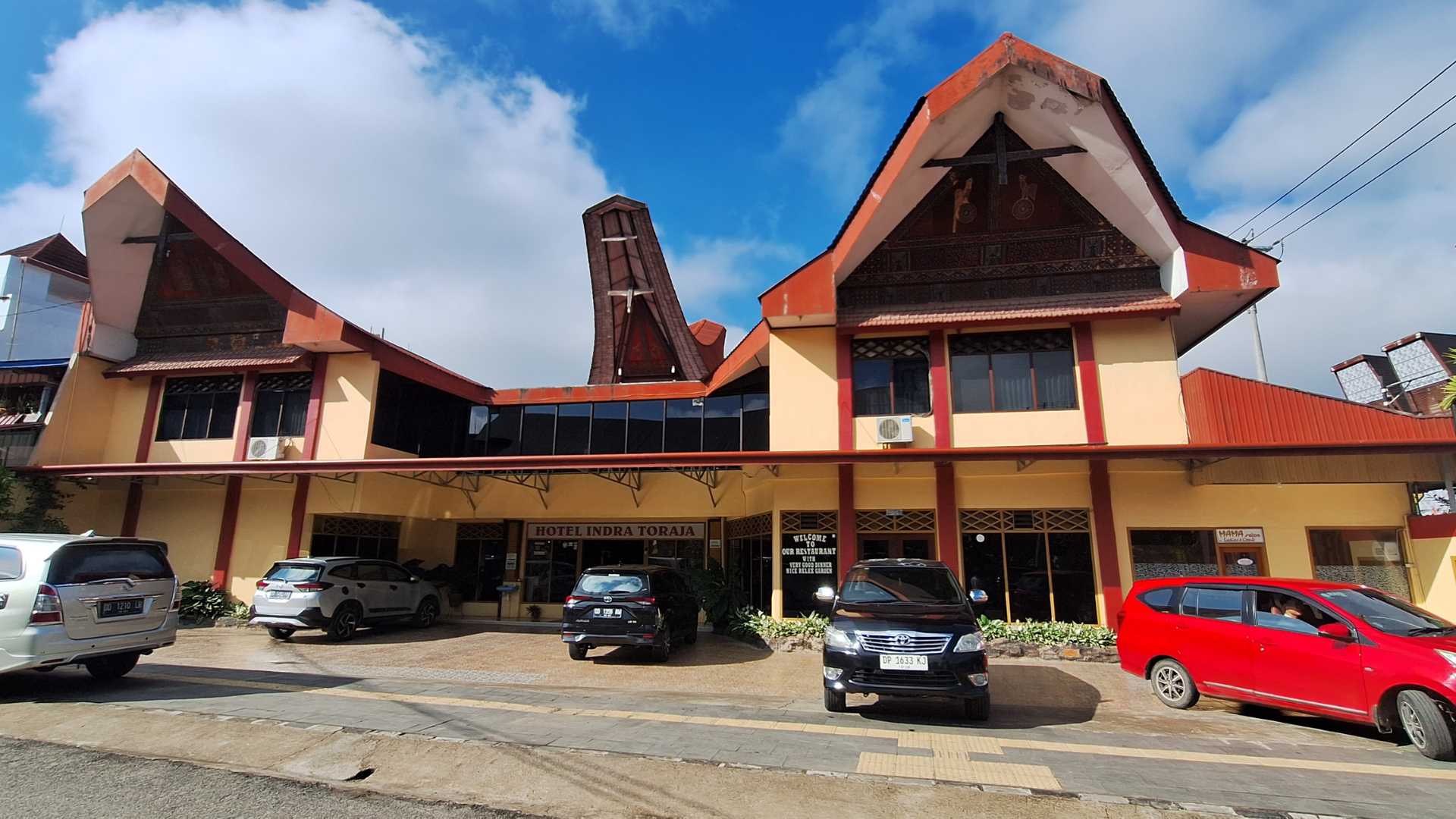
Food
Honestly, there are only a few Western-style restaurants in Rantepao- not too many options. In addition, you can find some local types of fast food and many cafes. Most of them can be found around the Central Square.
At least our hotel provided delicious meals, and in general, most places to stay have canteens with meals- some of them included in the price, and for some, you have to pay. The price in our hotel, Indra Toraja, included breakfast.
Finally, there are supermarkets like Indomaret and Alfamart- at least for some simple meals like noodles or snacks, if you are in a hurry.
What if no funeral ceremony?
So, you want to travel to Tana Toraja independently, without a tour company, to enjoy the freedom to organize everything by yourself. And that’s great. You travel to Rantepao, choose your “base camp” hotel, and stay there for a few days, roaming around to the points of interest described above.
However, you know that Tana Toraja is mostly famous not for specific locations (points of interest) but for activities- funeral ceremonies. So, you stay for a few days, visit all the places, search for a funeral ceremony, but… nothing.
After all, the local people organize their funeral ceremonies for themselves, their families, and their traditions, not for tourists. Tourists are welcome, but they are not the main subject of the event.
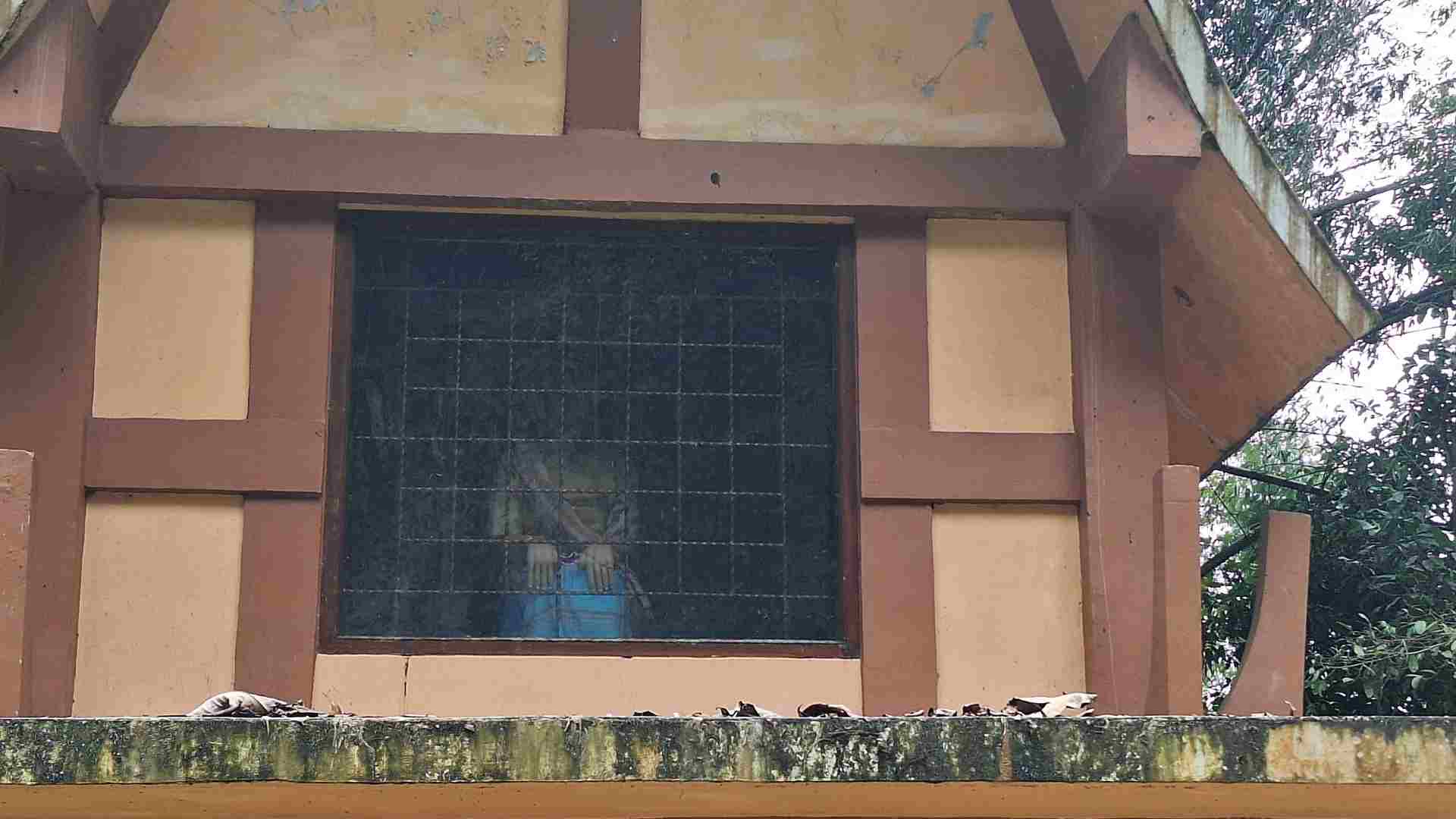
Here is what you should know about the funeral ceremonies
- Funeral ceremonies are more frequent in the dry season, from June to October, and rare in the other time of the year. Yet they are not every day.
- Go to the Tourism office in Rantepao. When locals plan a funeral ceremony, they inform the government, and the event is included in a list that you can find in this office, with date and location.
- Another source is your hotel. Hotels and tour companies keep active connections with the government and locals, so they are usually informed about such events.
- When you find an event, you can go independently. You don’t have to pay anything, but it is expected to bring a gift (like a pack of rice or an envelope with some cash, like 50,000 to 200,000 IDR). Dress modestly and be respectful there. Just follow others and ask for permission when you want to take photos or videos.
Finally, even if you are unlucky and your visit doesn’t coincide with a ceremony, don’t be disappointed. Tana Toraja’s culture is all around you, from the breathtaking funeral cliffs to the magnificent tongkonan houses. Visiting these points of interest is a rich and unforgettable experience in itself, offering a profound glimpse into a world where ancient traditions are still very much alive.
Take a look at these videos about Tana Toraja below:
Like it? Pin it here⇓! Follow us in Facebook, X and Instagram!




